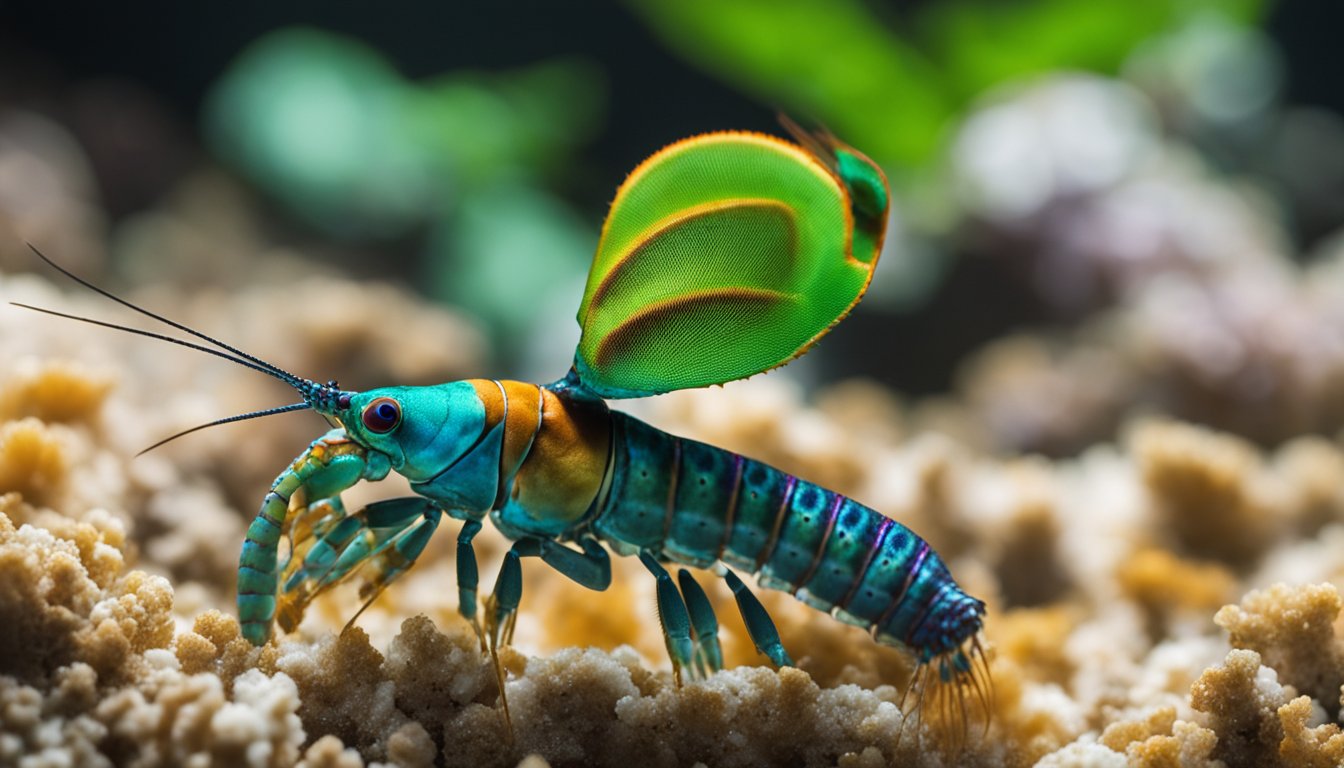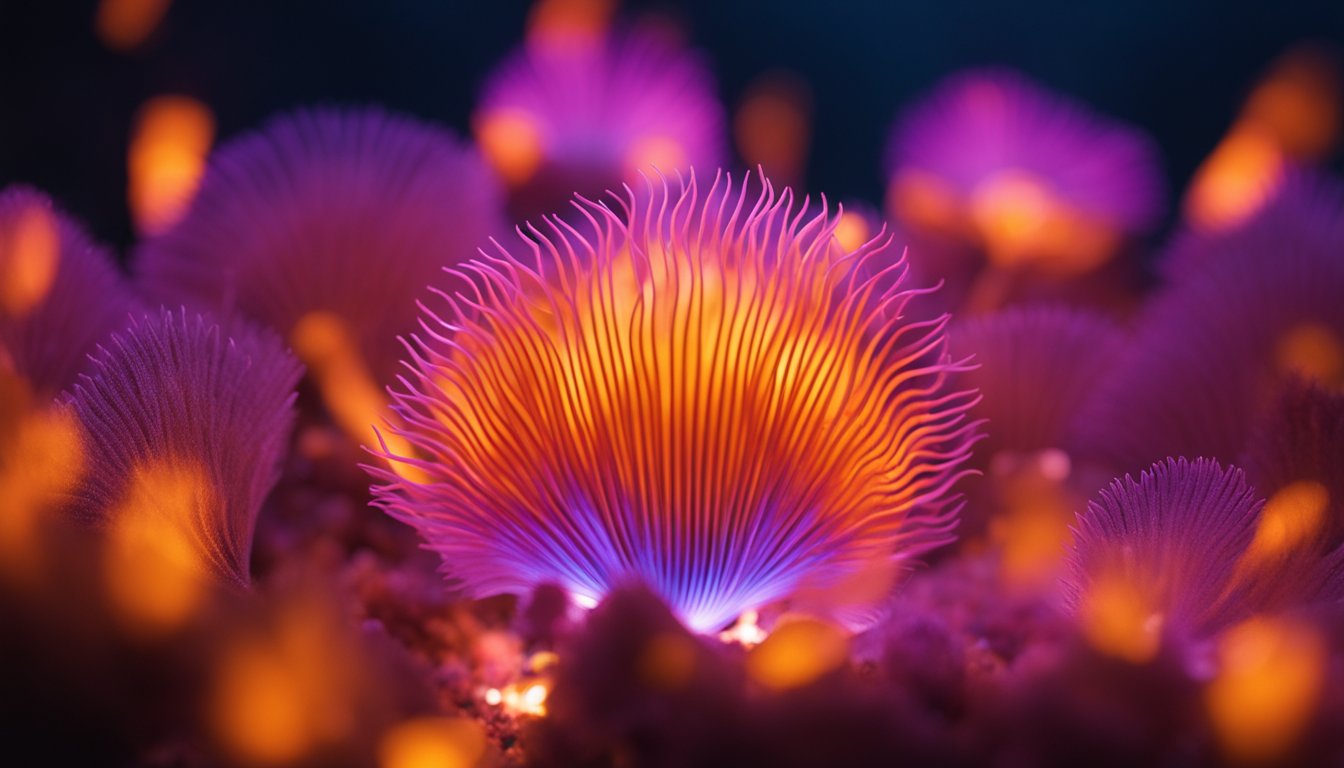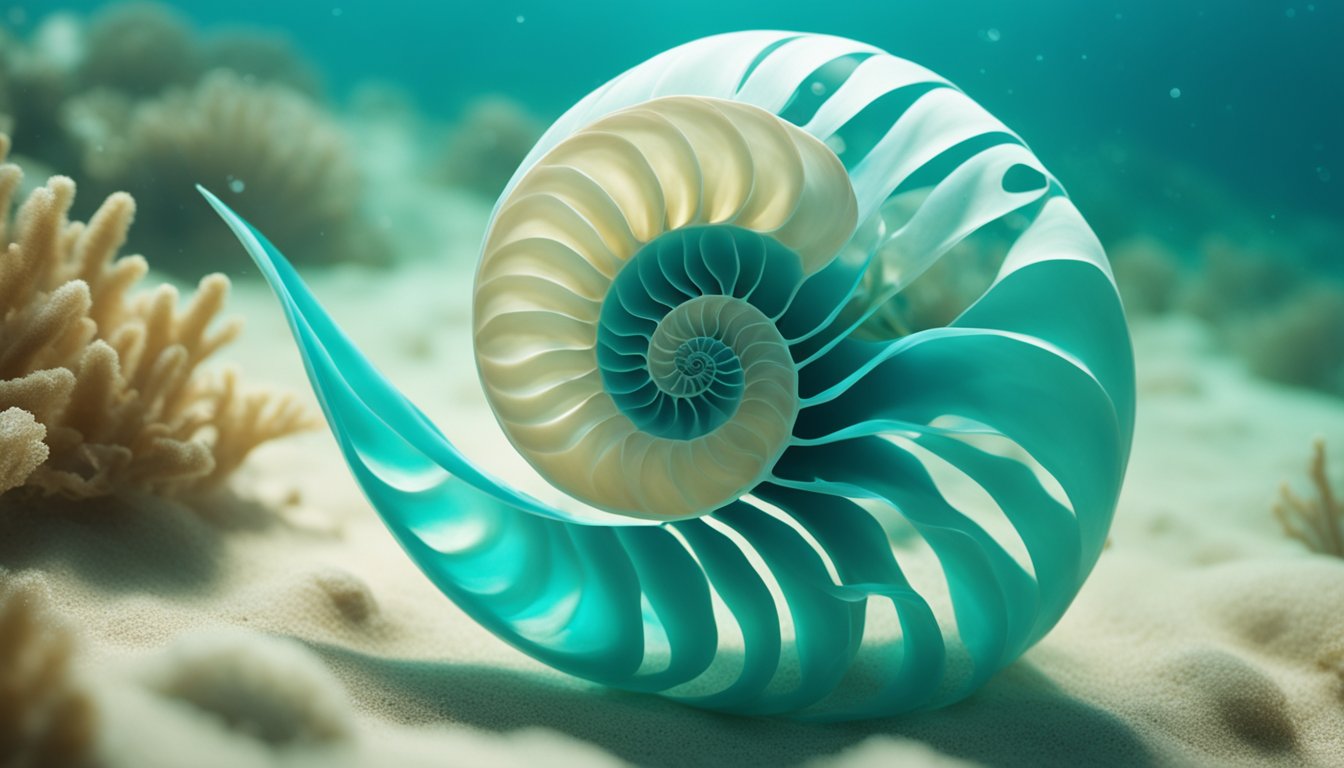Imagine swimming in the deepest, darkest parts of the ocean. It’s a place so mysterious that it feels like an alien world.
Down here, in the chilly depths where sunlight barely reaches, lives one of the most impressive creatures we’ve ever discovered—the colossal squid.
This massive creature, with eyes as big as dinner plates and tentacles lined with hooks, is not only the stuff of sailor’s tales but a real-life sea monster that calls the Earth’s murky depths home.

We’re just beginning to uncover the secrets of the colossal squid.
It’s an elusive giant, seldom seen by humans, and it can grow up to an astonishing 46 feet long—that’s about as long as a school bus!
Their enormous size and the remote habitat they live in make them incredibly difficult to study, but what we do know is fascinating.
These squids have the largest eyes in the animal kingdom, which help them see in the dim light underwater.
As you dive into their world, remember, there’s so much we still have to learn about these deep-sea giants.
Every rare encounter with a colossal squid is a treasure trove of information, helping us piece together the puzzle of their lives.
So, let’s take a journey together into the depths of the ocean and get a glimpse of the extraordinary and mysterious life of the colossal squid.
What wonders await us in the cold, dark waters where they dwell?
Exploring the Depths: Habitat and Distribution

When we think about colossal squids, we’re diving into a world where sunlight doesn’t reach—a realm both enigmatic and fascinating.
Let’s peer into the dark homes of these giants of the deep and see where on Earth they make their mysterious abodes.
Dark and Mysterious Homes
In the inky depths below 1,000 meters beneath the ocean’s surface, our colossal squid friends find their shelter.
What’s truly astonishing is how they have adapted to such extreme environments.
Imagine living in a place perpetually shrouded in darkness, with crushing pressure that would squish us like a pancake!
But for colossal squids, it’s just another day at the ‘office’.
They thrive in the deep-sea trenches and abyssal plains where the sun is just a story from above.
Global Presence
Think of the coldest seas you know, and there’s a good chance that’s where you’ll find these eight-armed wonders.
Particularly fond of the Southern Ocean, they swirl around the Antarctic, enjoying the chilly currents.
It’s not only the cold that they’re after.
These parts of the ocean are rich with food, like fish and other squids, that make a tasty dinner for a growing colossal squid.
Now, you might be wondering if they ever go on a vacation to warmer waters, but nope, they stick to the sub-Antarctic and lower latitudes.
Their presence circling Antarctica is what makes them a global, yet specifically Southern Hemisphere, marvel of the marine world.
Anatomy of a Titan

Let’s dive into the colossal squid’s extraordinary body, where every part has adapted to thrive in the ocean’s darkest depths.
Imagine building a creature perfect for the deep sea, and at its heart, you’d find the anatomy of the colossal squid.
Tentacles and More
We can picture the colossal squid’s tentacles like living fishing lines, with hooks and suckers to snatch prey.
These tentacles aren’t just long; they’re lined with sharp hooks.
Some of these hooks can swivel, and others are three-pointed, a design straight out of a sci-fi movie!
Yet, they’re real and quite effective for holding onto slippery dinner like fish or even other squids.
Now, let’s not forget the arms—shorter than the tentacles but thicker and just as important.
The colossal squid has eight arms, each sporting two rows of suckers.
Imagine holding onto something as slippery as a bar of soap in the bath, but underwater and in the pitch black.
That’s a piece of cake for these mighty arms because their powerful suckers are like little suction cups that never let go.
Together, arms and tentacles make this squid a formidable hunter.
Built for the Deep
We’re talking about a creature built to withstand enormous pressure and the chill of the deep sea.
The colossal squid’s body, or mantle, is like a big, squishy, and muscular bag, where all the internal organs are tucked in safely.
This squishy design helps the squid to stay afloat and move through the water without wasting much energy.
Plus, their eyes are gigantic, about the size of a dinner plate, making them one of the largest eyes in the animal kingdom!
These huge eyes are perfect for spotting prey or predators in the deep sea where light is scarce.
Our colossal friend’s bloodstream has a unique feature—it’s blue!
The blood uses a copper-containing molecule called hemocyanin for carrying oxygen.
Since temperatures down there are near freezing, and there’s not a lot of oxygen, this special blood is super efficient at keeping everything running.
Being built for the deep is all about being tough, and the colossal squid is as tough as they come in the ocean’s depths.
The Colossal Squid’s Diet

Before we dive in, let’s shine a light on the remarkable dining habits of the colossal squid.
These mysterious creatures lurk in the oceanic shadows, where they snatch up prey with their powerful tentacles.
Hunter of the Depths
In our quest beneath the waves, we find that the colossal squid lives a life of a deep-sea predator.
These giants rule their chilly, dark kingdom, munching on a diet mainly consisting of Patagonian toothfish and antarctic toothfish.
Imagine these squids like underwater super-spiders, using their enormous eyes—the largest in the animal kingdom—to spot their fishy meals from afar, even in the gloomy waters where sunlight dares not reach.
They aren’t picky, though. Our eight-armed friend grabs whatever swims its way, using its sharp beak to take sizeable bites of its catch.
The beak of a colossal squid is a fascinating tool; it’s as sharp as a parrot’s beak and can slice through thick layers of flesh like butter.
A Kraken’s Feast
Legend has it that sailors once feared what they called the ‘kraken,’ a colossal squid with an endless appetite.
But today, instead of sailors, these soft-bodied titans feast on deep-sea fishes and other squids.
We’ve even discovered some evidence, like battle scars on sperm whales, that these marine behemoths sometimes clash in epic underwater battles.
While the colossal squid is munching on fish, it has to watch out for hungry sperm whales that wouldn’t mind a calamari snack.
Can you imagine the sight of such an encounter?
It’s a true natural marvel, complete with ink clouds, thrashing tentacles, and the deep’s echoing silence, interrupted only by the fight for survival.
This dance of predator and prey is a tale as old as the ocean’s depths themselves, with the colossal squid as one of its most enigmatic and formidable characters.
Mysteries Unveiled: Behavior and Life Cycle

In the shadowy depths of the world’s oceans, the colossal squid leads a life full of secrets, from its elusive behavior to its impressive growth from a tiny hatchling to a formidable giant.
Let’s dip our toes into the chilly waters and unravel some of these marine mysteries together.
Deep-Sea Secrets
We can imagine the colossal squid as a stealthy predator, lurking in its dark, chilly home far below the surface.
It’s not easy to study these creatures since they live in such remote and inaccessible places.
However, scientists have managed to learn a bit by examining the ones accidentally caught in deep-sea fishing nets.
Colossal squid spend most of their time hunting in the cold depths, up to 2,200 meters (7,200 feet) below sea level.
Their large eyes, the size of dinner plates, are perfect for spotting prey in the dim depths. These eyes are the largest known of any living creature!
They hunt for fish and other squids, using their strong, hooked tentacles to capture their meal.
Despite their massive size and fierce reputation—we’re talking about an animal that can grow up to 12-14 meters (39-46 feet) long and weigh as much as 750 kilograms (about 1,650 pounds)—it seems our colossal friend prefers to avoid the limelight, living a rather solitary life.
From Hatchling to Giant
Now, let’s turn our attention to how these magnificent beasts grow.
Colossal squid start their life as teeny-tiny eggs, hidden away in the ocean’s depths.
When they hatch, they are mere centimeters long, almost unrecognizable compared to the giants they become.
As they grow, they navigate through different layers of the ocean, constantly on the hunt for food to fuel their rapid growth.
The colossal squid’s journey from hatchling to behemoth is not well-documented due to their elusive nature, but we do know that they grow quickly and may live for several years.
Growing at such an extraordinary speed requires a lot of food; this means our small fry doesn’t stay small for long.
It constantly munches on a diet rich in prey such as smaller squid and fish, becoming the giant squid we are equally mystified and mesmerized by.
So there we have it, our peep into the lives of these enigmatic sea monsters.
Isn’t it astounding how much there is out there we’ve yet to learn about?
Encounters with the Colossal Squid
When we think about giant creatures that lurk in the deep ocean, the colossal squid often captures our imaginations.
These magnificent animals are not just figments of our wildest dreams; they’re real, and their encounters with humans have been both rare and fascinating.
Rare Sightings
The colossal squid remains one of the most elusive creatures living in our oceans.
To put it in perspective, fewer than a handful of these squids have ever been seen alive!
Most of what we know comes from the few specimens that have been caught in fishing nets or found in the stomachs of Sperm whales.
Imagine a creature with eyes the size of dinner plates and tentacles covered in hooks; that’s our colossal squid.
One of the largest recorded specimens measured about 14 meters long, which is nearly as long as a school bus!
Typically, these sightings occur in the Southern Ocean around Antarctica.
It’s super chilly there, yet the colossal squid has adapted to live in these icy waters.
Their massive size and the inhospitable environment they call home make studying them a substantial challenge.
For scientists, catching a glimpse of this deep-sea giant in its natural habitat is kind of like finding a hidden treasure!
Humans and the Colossal Squid
You might now be wondering, “Have humans ever come face-to-face with a living colossal squid?” The rare instances where this has happened usually involve brave fishermen working in the icy Southern waters.
Only a couple of these extraordinary encounters have been documented.
The most notable one occurred in 2007 when a live colossal squid was captured by a New Zealand fishing vessel.
It weighed an incredible 495 kilograms!
But even with these few encounters, we’ve managed to learn quite a bit. Did you know that colossal squids have the largest eyes in the animal kingdom?
Those big peepers might help them spot predators and prey in the murky depths where they live.
Although we may not see them often, we do get clues from deep sea predators like the Sperm whale, which sometimes bear battle scars from fights with colossal squids.
Those scars remind us of the epic unseen battles taking place in the depths of our ocean.
Conservation Status and Future Research
Imagine we’re boarding a submarine, ready to dive into the deep blue to visit our mysterious friend, the colossal squid.
These giants are secretive, but we’ve learned they hang out mostly in the deep waters around Antarctica.
As of now, we don’t have to worry too much about them disappearing; the colossal squid is currently not listed as endangered or threatened.
Yet, we must stay vigilant to keep it that way!
So, what can we do to protect these deep-sea wonders? Let’s put on our scientist hats and think.
One big thing we focus on is research, understanding more about their habitat, what they eat, and how they live their lives deep beneath the waves.
By doing so, we’re taking huge steps in ensuring they stick around for generations to come.
Now let’s dive into a little secret: not many colossal squids have been seen by humans—not alive, anyway.
So part of our mission is to catch a glimpse of them in their natural setting without disturbing their home.
We’re also trying to figure out how climate change and fishing activities might affect them.
By keeping a close eye on the squid’s icy ocean home, we can help safeguard these gigantic, tentacled treasures.
Our quest to learn more about the colossal squid is quite the adventure, isn’t it? We also encourage responsible fishing practices.
This way, we make sure our ocean friends don’t accidentally end up as a catch.
There’s still so much to explore, and you can bet we’re eager to uncover all of the colossal squid’s secrets!
Frequently Asked Questions
Before diving into the depths of the ocean to explore our elusive underwater allies, let’s tackle some questions about the colossal squid, one of the ocean’s most fascinating inhabitants.
What incredible features do colossal squid have that make them unique in the ocean?
Our friend, the colossal squid, is truly a marvel of the deep with its massive size and strength.
It possesses the largest eyes in the animal kingdom, each one akin to the size of a soccer ball, giving it superb vision in the dark oceanic depths.
Plus, its arms and tentacles are lined with sharp hooks, some of which can swivel, making it a formidable predator.
How do colossal squid compare in size to other giant sea creatures?
Imagine a creature as long as a school bus—that’s our colossal squid!
They can grow up to 46 feet long and are considered one of the largest invertebrates on Earth.
While they’re not quite as long as the blue whale, the ocean’s largest mammal, they’re the heavyweight champions of the squid family, outweighing even the giant squid.
Can you imagine the size of a colossal squid’s eye and why it’s so big?
The eyeball of a colossal squid is something out of a storybook—about the size of a dinner plate! That’s right, each eye is as big as our heads.
These enormous peepers give the squid an unparalleled advantage in detecting light and movement in the pitch-black waters where they reside, helping them spot prey or predators from far away.
What do colossal squids eat in the deep blue, and how do they catch their food?
Colossal squids are not picky eaters; they have a taste for large fish and even other squid, including their cousin, the giant squid.
Their eight arms and two longer tentacles are equipped with powerful suction cups and rotating hooks, allowing them to seize their prey in a swift surprise attack.
Once hooked, there’s little escape from the squid’s beak-like mouth.
Are there any fascinating stories of colossal squid encounters by humans?
While we rarely encounter colossal squids, when we do, it makes quite the story!
Sailors and fishermen have told epic tales of battles with these enormous creatures, and sometimes, colossal squids are found in the stomachs of sperm whales, evidence of deep-sea confrontations.
In 2007, a nearly intact colossal squid was captured near Antarctica, providing us with precious insights into its mysterious life.
Why don’t we often see colossal squid swimming around, and where do they like to hide?
Colossal squid prefer the cold, dark depths of the Southern Ocean, up to 1,000 meters below the surface! That’s deeper than most submarines can go.
These shy giants love their privacy and the vastness of the deep sea is their perfect hiding spot, making encounters with us land-dwellers incredibly rare.
They lurk near the ocean floor or in the twilight zone, where sunlight barely reaches.




